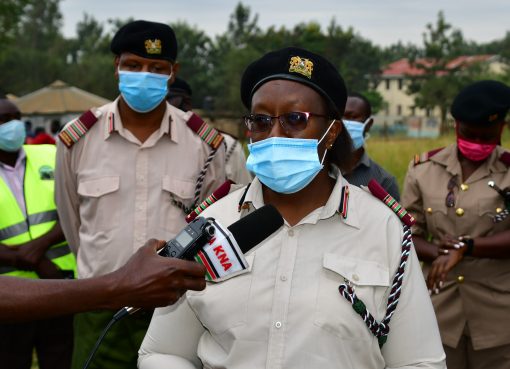The constitution states that every citizen has the right to life and the right to the highest attainable standards of health including full immunization of children against killer diseases.
It goes without saying that a healthy nation with high productivity in all sectors heavily relies on health citizens accessing universal healthcare services.
However, the unprecedented increase in the number of unvaccinated children presents a serious risk of vaccine preventable diseases outbreak.
In addition, inequities in coverage at the sub national level and existence of highly mobile nomadic populations further compounds the problem.
In Baringo County for instance, a total of 7,392 children have not been immunized in the past four and half years with Tiaty constituency leading the pack with 5,038 unvaccinated children, a figure representing 68.2 percent.
Mogotio with improved immunization coverage has 399 children under five years who did not receive any vaccination as required, representing 5.4 percent.
The Expanded Programme on Immunization (EPI) County Logistician Lenah Kosgei said that the county was fairly doing well in terms of immunization adding that the status of fully immunized children under 1 year for period between April-June, 2019, stands at 66 percent compared to 64 percent in 2018.
She said that by July 2019, there were 1,010 children in the county who have not received any vaccination compared to 1,336 in 2018, of whom 478 of them were from East Pokot.
“In 2015, 1843 children were not vaccinated, 2016 (1,476), 2017(1,727) out of which 894 are in East Pokot and Tiaty East sub counties. In Mogotio Sub County there were only 87 unimmunized children,” Ms Kosgei stated.
Among the deadly diseases a child must be vaccinated against are tuberculosis, tetanus, measles, polio, diphtheria, hepatitis B and yellow fever.
“Every child must complete all vaccinations against the above diseases as per the recommended schedule before two years of age. A child must receive all the vaccinations as a way of protecting them from contracting preventable diseases and disability,” the EPI Logistician explained.
The EPI Logistician disclosed this during a daylong Health Journalists’ Sensitization Forum on immunization in Baringo held at a Kabarnet hotel.
Ms Kosgei attributed the low immunization to low levels of insecurity in Tiaty, parts of Baringo North and Marigat sub counties, poor documentation, missed opportunities, poor defaulter tracing mechanism, poor health seeking behaviours, shortage of medical staff and inadequate supervision.
Of the 53 health facilities in East Pokot and Tiaty East Sub Counties, 26 have no access to electricity which is essential in storage and management of vaccines.
However, the health worker expressed hope that there is a glimmer of hope as the county government has instituted some interventions including procurement of 85 cold chain equipment, training of 105 health workers on KEPI operation management.
“We have also established 140 outreach services, opened 21 new immunization sites in the county as well as intensifying on default tracing process,” she added.
County Executive Committee (CEC) for Health Mary Panga admitted that immunization in places like Tiaty is extremely difficult because of the nomadic lifestyle of the community who keep moving from one place to another in search of pasture and water for their livestock.
“Even if we construct health facilities in this remote region it would not help the community due to its nomadic nature. At the moment our focus is to establish mobile clinics in the far flung area. We resolved to have two outreach camps per month in addition to reviving community health volunteers programme in order to increase linkages between the county government and grassroots levels. All these are short term interventions,” the CEC elaborated.
On skilled deliveries, the sensitization forum attended by among others CEC Health Panga, Chief Officer of Health Dr Gideon Toromo and his Preventive and Promotional Health Care counterpart Dr Winnie Bore, was informed that more than 51 percent of mothers in the county do not deliver at health facilities.
Ms Kosgei said the situation was critical in Tiaty where only 8 percent of mothers deliver at health facilities, a situation, she blamed on shortage of medical personnel and cultural issues.
Dr Toromo attributed the low skilled delivery by qualified nurses to negative attitude by the mothers to giving birth at hospitals and the fear of being rushed to undergo caesarian section (CS).
“Some mothers in rural areas don’t deliver at health facilities allegedly because of perceived rudeness by nurses. To reverse this, we have started training nurses on how to treat mothers in labour and we have also enlightened women on the government initiative in making maternity care free in public hospitals to encourage them to seek skilled deliveries rather giving birth at home under unskilled hands of traditional birth attendants (TBAs),” Dr Toromo explained.
The chief officer advised expectant mothers to stop fearing to deliver at health facilities saying that the national government through the Linda Mama programme is catering for all costs on delivery in hospitals and thus they should go for safe deliveries in any health facility.
Dr Toromo, a renowned medic noted that the less health indicators and health facility deliveries have been majorly due to insecurity in parts of the county, poor mobile network and extremely bad roads and inadequate staff levels at the facilities.
Health Cabinet Secretary (CS) Sicily Kariuki speaking at Baringo County Referral Hospital, Kabarnet, on her visit to the region noted with dismay the low immunization rate in some parts of the county, a situation she stressed, calls for collective efforts from relevant sectors to raise the vaccination levels close to the national average rate of 80 percent.
“Conditions which are preventable may not be so preventable if the children are not vaccinated against the common child killer diseases,” the CS said.
The CS who flagged off a vehicle and motorbikes to boost immunization coverage in the county, said the national government was committed to help the county reach the unvaccinated children especially in far flung areas in a deliberate move to support the government realize its universal health care coverage (UHC) initiative.
The CS said her ministry will partner with the county to establish community health units in areas where it does not exist so that children and mothers in such remote villages do not have to travel long distances to large health facilities for immunization jabs.
“We salute community health workers who though they are not trained like other medical personnel, are doing a fantastic job,” she applauded.
She said that the government was going to train the community health workers to enable them continue doing the same work effectively and efficiently.
The Health CS who officially opened a newly established fully equipped Renal and Theatre units at the hospital funded by the national government also handed over five fridges that include solar powered ones for preservation of vaccines at health facilities.
Kenya Demographic Health Survey (2014) showed that at least 80 percent of children received all their childhood vaccines by their first birthday and the survey further indicated that by 2016, the national coverage stood at 81 percent, slightly below the national target of 90 percent.
According to Kenya Aids NGO Consortium (KANCO) which is implementing the Global Alliance on Vaccine Initiative (GAVI) official, Stephen Ikonya, uptake of vaccination increases life longevities and results in higher return on investment in the country.
He called for debunking of myths associated with vaccination such as that vaccines causes infertility saying millions of people have undergone vaccination and are still able to get pregnant.
By Joshua Kibet




